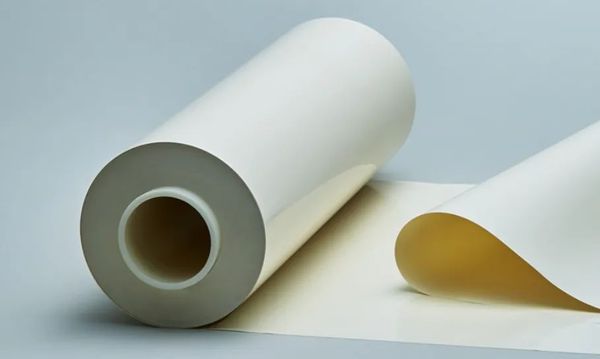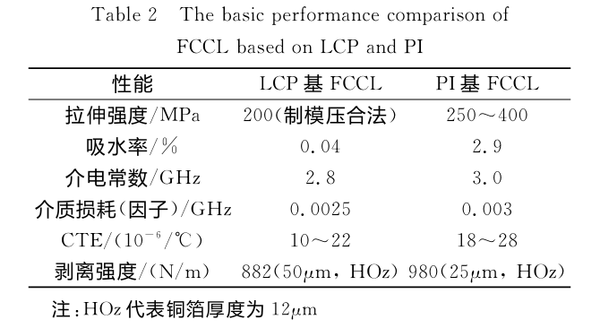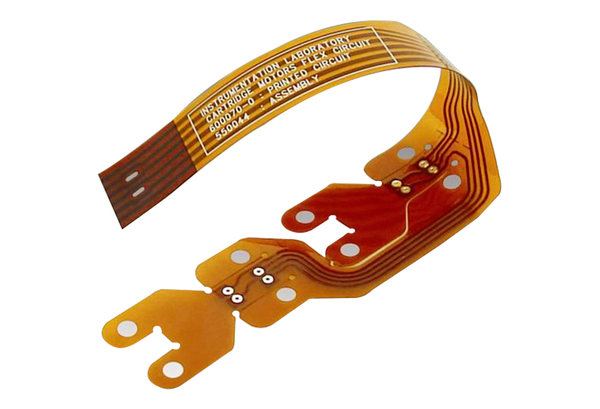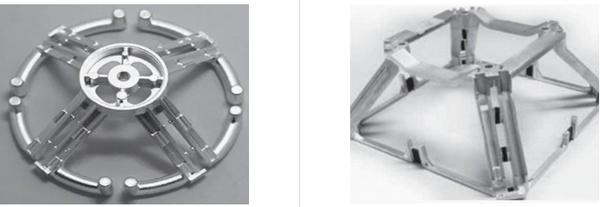Giant announces production halt! Strategic turning point for 5G new materials
Recently, Kuraray announced the discontinuation of production of Vecstar™ FCCL flexible copper clad laminates, but its factory in Saijo City, Japan, will continue to produce and sell Vecstar™ liquid crystal polymer (LCP) films and is striving to expand their applications. It is understood that Vecstar™ is the world's first LCP film, developed based on Kuraray's unique film-making technology.

Vecstar™
One, unexpected realities
LCP was once predicted to replace polyimide as the mainstream choice for antenna materials in the 5G era, but a series of practical issues such as complex fabrication processes, high costs, and lower-than-expected downstream commercialization have become major obstacles to its widespread application.
In the past decade, wireless communication technology has made significant progress. High-performance micro/mm-wave communication equipment required for commercial use, which demands high power output, high gain, low noise, and high linearity, has attracted extensive attention from experts in fields such as radar and antenna design, electronic warfare, both domestically and internationally. However, due to limitations in substrate materials, these high-performance microwave devices still face technical challenges today.
Before the advent of LCP substrates, the flexible dielectric substrate materials widely used in the industry were mostly polyester and polyimide (PI) resin-based substrates.
Among them, PI boasts advantages such as excellent heat resistance, strong flexibility, high physical strength, and low dielectric constant (Dk)/dielectric loss (Df). As a result, it has consistently been a crucial dielectric material for flexible copper-clad laminates, holding a market share of over 80% in flexible copper-clad laminate products.
However, PI materials have long-term application risks: an absorption rate of more than 2% gives this material high water absorption performance, which can easily cause dramatic changes in its dielectric properties, leading to unstable signal transmission and sharply increased loss under high-frequency conditions. This defect is especially fatal for modules such as antennas used for signal transmission and reception.
By using LCP with equally excellent properties and an absorption rate (23 ℃, 24 h) of only 0.04% to replace PI as the key dielectric layer material, to address the high moisture absorption rate of the latter, it is particularly suitable for the 5G communication antenna field.

*Comparison of Basic Properties of LCP-based FCCL and PI-based FCCL
However, although the performance of LCP is perfectly suited to the requirements of core components in the high-frequency communication field, its unique anisotropy and chemical inertness make the processing difficult. Besides, the poor adhesion to metals caused by its stable physicochemical properties also limits its development.
*The anisotropy of LCP refers to the fact that this material is a state of matter intermediate between crystals and amorphous liquids. It can flow like ordinary liquids but simultaneously exhibits anisotropy similar to solid crystals. In other words, the physical characteristics of LCP differ in different directions, which is why they are often referred to as anisotropic liquids.
From the perspective of the structure of flexible copper-clad laminates (FCCL) used for communication equipment, FCCL refers to single-sided or double-sided flexible copper-clad laminates obtained by using insulating materials such as PI film or LCP film as the base material, with a thin copper foil conductor laminated on the surface to meet the requirements of flexibility.
The chemical inertness of LCP is mainly manifested in its poor adsorption characteristics towards Cu, which is attributed to the weak adhesion and low diffusion rate of Cu atoms on the LCP substrate at low temperatures. This chemical inertness poses challenges for further processing and manufacturing, especially in multilayer applications. To overcome these difficulties, numerous studies have proposed the use of plasma gas activation of LCP to improve adhesion and surface activation. The microelectronics industry and packaging technology focus on optimizing the adhesion between the copper layer and the PCB substrate while maintaining a smooth surface suitable for high-frequency applications.

Currently, in industry, the interlayer bonding between LCP substrates and copper layers commonly uses a pure adhesive method to enhance the bonding strength. However, after plasma treatment and using a no-adhesive approach for direct lamination, the required heat press temperature is very high, typically reaching 220°C or higher, which exceeds the thermal pressing conditions that can be achieved by fast-press machines commonly used in enterprises.
In addition, the cost issues of LCP flexible circuit boards seriously hinder their large-scale application. It is understood that the cost of LCP RF antennas of the same scale is about 10 to 20 times that of PI antennas.
2. What other possibilities does LCP have?
In addition to flexible circuit boards, LCP is also used in the communications sector as base station antenna elements and high-speed connectors for base stations. It's worth noting that according to the "Quality Improvement and Efficiency Enhancement Action Plan Evaluation Report for 2024" released by Kingfa Science & Technology recently, the LCP developed by this company has been widely applied in high-speed connectors, high-speed rotation cooling fans, new energy battery structural components, and other parts.
Antenna vibrator
The antenna dipole is the core component of an antenna, primarily responsible for amplifying signals and controlling the direction of signal radiation, while also enhancing the electromagnetic signals received by the antenna. Currently, the materials used for dipoles are all metal, and the main issues with metal-made dipoles are their high cost and excessive weight, which pose significant challenges to antenna quality control. Using plastic materials as the main material for antennas can not only substantially reduce weight but also effectively control the cost of the dipoles.
In the design of 5G antenna elements, there are two schemes. The first involves combining laser direct structuring (LDS) material with metal material. The LDS material is used for the antenna elements, while the backside employs metal material to reduce costs, eliminating the need for chemical plating everywhere. The second scheme uses polyphenylene sulfide (PPS) or LCP for electroplating. Since SMT reflow soldering is required, high-temperature engineering plastics are generally chosen. Currently, many manufacturers opt for PPS, but the dielectric loss of PPS at 2.5GHz is approximately 4‰, whereas the dielectric loss of LCP at the actual frequency is only 1.5‰, and it may be even lower at 2.5GHz. Therefore, PPS, which is widely used now, is likely to be replaced by LCP in the future.

*5G metal vibrator (left); plastic vibrator (right)
Base Station High-Speed Connector
High-speed communication connectors are mainly used in the fields of communication, networking, medical, home appliances, and instrumentation, strongly driving the development of connector technology. Connectors are the bridges of communication in circuits and are widely used in data communication, computers and peripherals, consumer electronics, automotive, industrial, medical, aerospace, and military fields.
Connectors are generally assembled from stamped parts after plating and plastic parts. The stamped parts serve as conductive wires, and the plastic parts serve as the connector's frame. The original connector frame base material was made from engineering materials like ABS. However, for 5G high-speed communication connectors, common engineering materials cannot meet the requirements for low latency, high reliability, and low power consumption. LCP material is an excellent choice. LCP has injection molding characteristics and can produce thermoplastic components, which possess unique processing characteristics and extremely high performance. Due to its high heat resistance and good fluidity, LCP allows for weight reduction or thinner walls, and it can often replace metals, ceramics, and other plastics.
Certainly, the application fields of LCP are not limited to the communication sector. In the electronics and electrical appliance sector, LCP can be applied to high-density connectors, coil bobbins, spools, substrate carriers, capacitor casings, etc. In the automotive industry, LCP can be used for components in the combustion system, fuel pumps, heat insulation parts, precision components, electronic components, etc. In the aerospace sector, LCP can be utilized in radar antenna shields, housings that are resistant to high temperatures and radiation, among other areas.
Source: Official websites of various companies, Plastics Technology and Equipment, academic papers, etc.
【Copyright and Disclaimer】The above information is collected and organized by PlastMatch. The copyright belongs to the original author. This article is reprinted for the purpose of providing more information, and it does not imply that PlastMatch endorses the views expressed in the article or guarantees its accuracy. If there are any errors in the source attribution or if your legitimate rights have been infringed, please contact us, and we will promptly correct or remove the content. If other media, websites, or individuals use the aforementioned content, they must clearly indicate the original source and origin of the work and assume legal responsibility on their own.
Most Popular
-

List Released! Mexico Announces 50% Tariff On 1,371 China Product Categories
-

Nissan Cuts Production of New Leaf EV in Half Due to Battery Shortage
-

New Breakthrough in Domestic Adiponitrile! Observing the Rise of China's Nylon Industry Chain from Tianchen Qixiang's Production
-

Dow, Wanhua, Huntsman Intensively Raise Prices! Who Controls the Global MDI Prices?
-

Mexico officially imposes tariffs on 1,400 chinese products, with rates up to 50%






